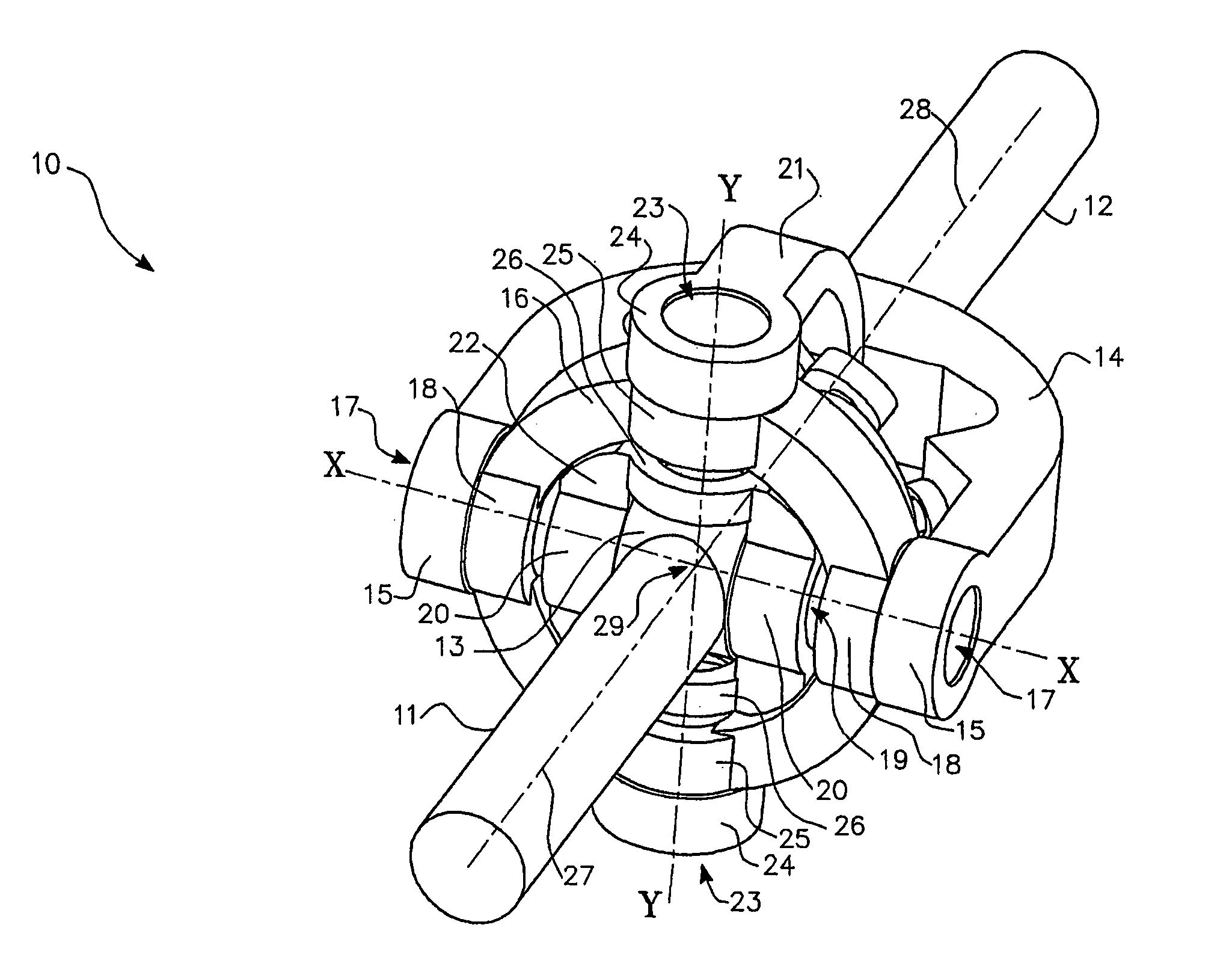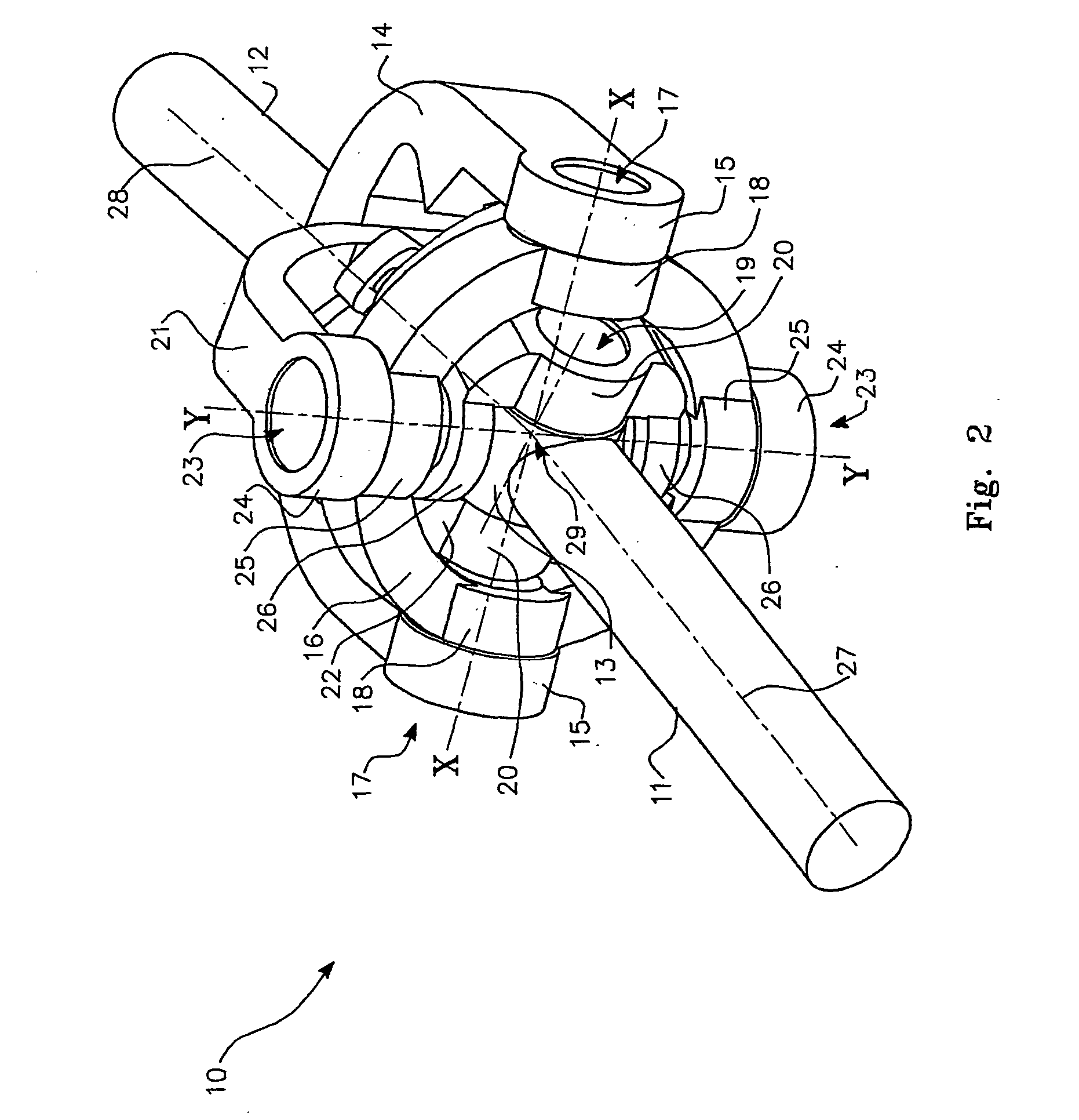Constant velocity coupling and control system therefor
a constant velocity coupling and control system technology, applied in the direction of yielding couplings, couplings, rotary machine parts, etc., can solve the problems of vehicles not being able to maintain a strict geometric relationship, the angular velocity of the output shaft fluctuating sinusoidally, etc., to facilitate the use of a member and facilitate the operation of the centering mechanism.
- Summary
- Abstract
- Description
- Claims
- Application Information
AI Technical Summary
Benefits of technology
Problems solved by technology
Method used
Image
Examples
first embodiment
[0225] First Embodiment
[0226] A constant velocity coupling wherein the axes of all rotational elements intersect at the intersection of the input and output shaft axes. The coupling is provided with a control yoke and control mechanism wherein the control yoke defines an axis of rotation bisecting the supplementary angle between the input shaft axis and output shaft axis of the coupling.
[0227] The control mechanism is in the form of a double scissor assembly where all linkages have axes radial to the intersection point of the input and output shaft axes, the pivoting centers of the control linkages effectively lying at the vertices of equal spherical triangles.
second embodiment
[0228] Second Embodiment
[0229] A constant velocity coupling wherein all elements are identical to those of the first embodiment except that the control mechanism consists of a geared mechanism where two linkage arms provided with gear segments mesh with a central gear, this assembly controlling the axis of the control yoke to lie on the bisector of the supplementary angle between the input and output shaft axes.
third embodiment
[0230] Third Embodiment
[0231] A constant velocity coupling wherein either the scissor mechanism of the first embodiment, or the geared mechanism of the second embodiment controlling the axis of the control yoke to lie on the bisector of the supplementary angle between the input and output shaft axes but where the inner and outer yokes are modified from a full circular form to a partial segment form.
PUM
 Login to View More
Login to View More Abstract
Description
Claims
Application Information
 Login to View More
Login to View More - R&D
- Intellectual Property
- Life Sciences
- Materials
- Tech Scout
- Unparalleled Data Quality
- Higher Quality Content
- 60% Fewer Hallucinations
Browse by: Latest US Patents, China's latest patents, Technical Efficacy Thesaurus, Application Domain, Technology Topic, Popular Technical Reports.
© 2025 PatSnap. All rights reserved.Legal|Privacy policy|Modern Slavery Act Transparency Statement|Sitemap|About US| Contact US: help@patsnap.com



